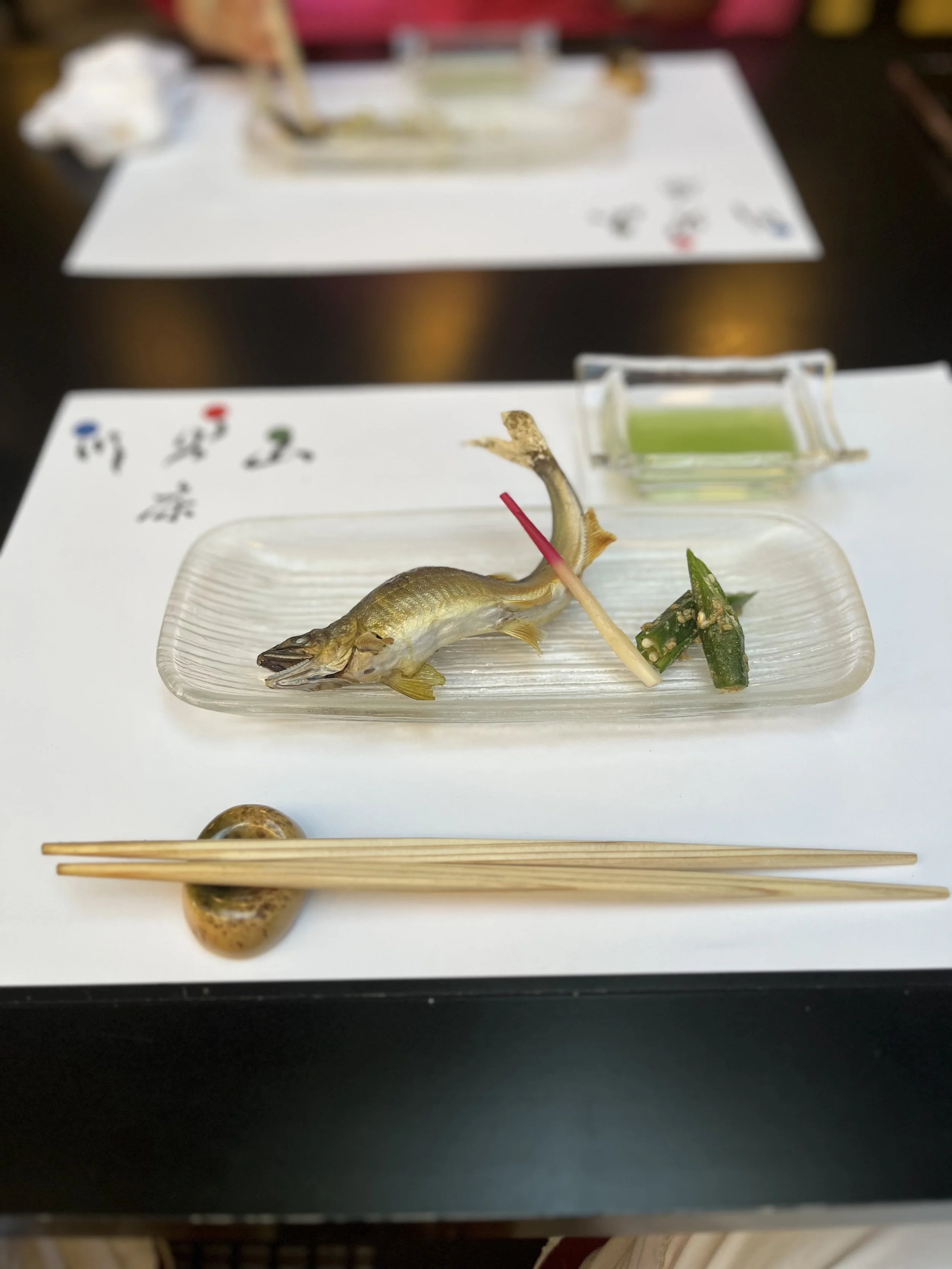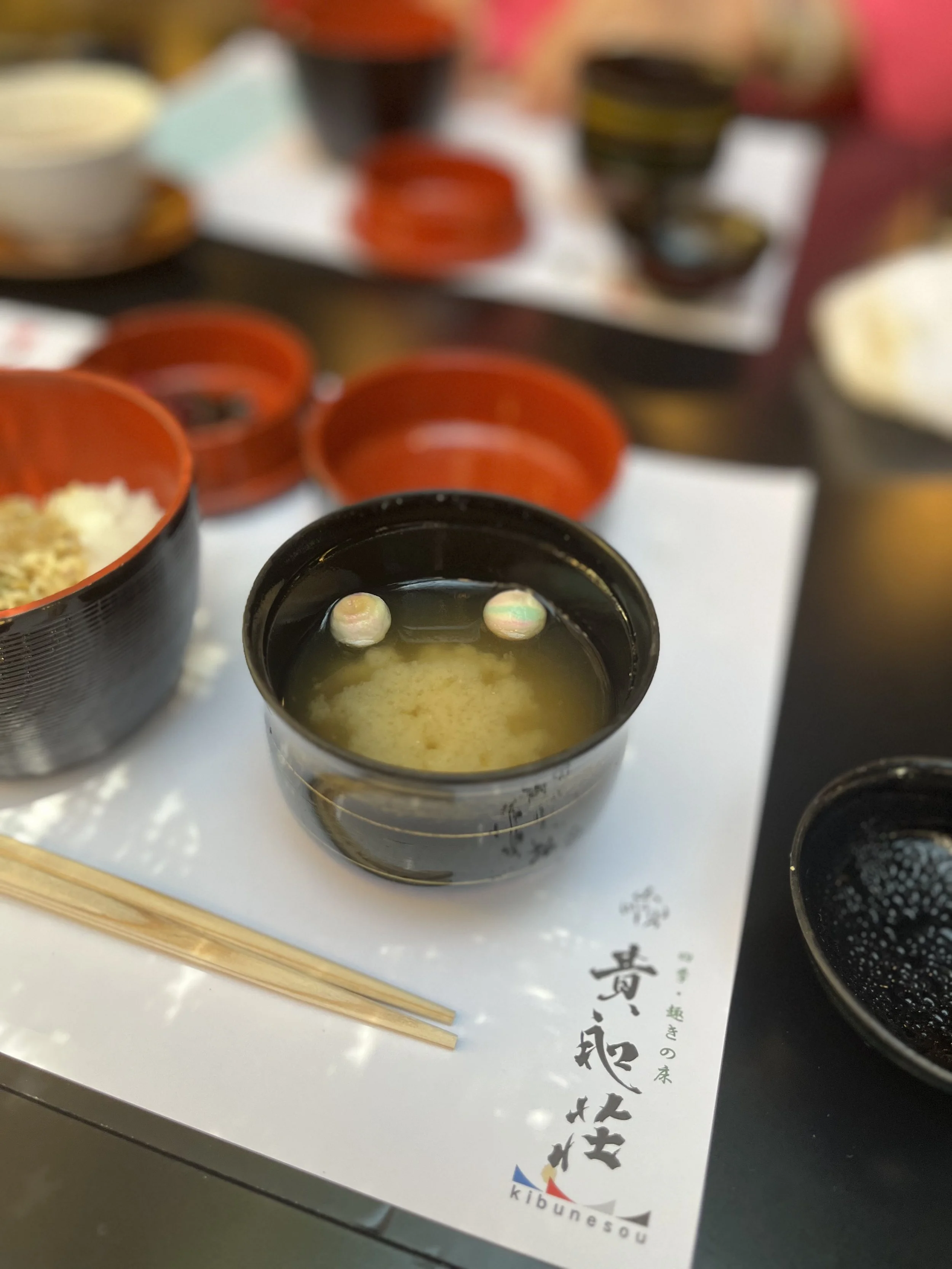貴船-Kifune riverside terrace cuisine in Kyoto-Japanese home cooking class in Tokyo
To enjoy the cool breeze and seasonal flavors, I traveled from Tokyo to Kifune in Kyoto. The goal was to savor the renowned kawadoko cuisine of Kifune.
Kawadoko refers to dining platforms set up right beside the flowing river, where one can relish a summer tradition while feeling the refreshing breeze and listening to the gentle murmur of the water. The seats are so close to the river surface that it feels as if you could reach out and touch the water. The sound of the flowing river acts as a natural soundtrack to the meal. Compared to central Kyoto, the temperature here feels about 10°C cooler, making it a popular summer retreat.
Kifune river-Kyoto, Japan
Kifune Shrine
Kifune Shrine (Kifune Jinja) is an ancient shrine located in Kurama Kifune-cho, Sakyo Ward, Kyoto City. It is the head shrine of approximately 500 Kifune Shrines nationwide. Its history dates back about 1,300 years, making it one of the oldest shrines in Japan.
Kifune shrine-Kyoto, Japan
The main deity enshrined is Takao-kami (Takao Okami), the god of water, who has long been worshipped as the water source deity responsible for supplying water to the capital. The place name "Kifune" is read without the voiced consonant—as "Kifune" rather than "Kibune"—which carries the meaning of keeping the water pure and clear.
七夕飾り 願いを込めて♡-Kifune Shrine- Japanese culture
Kifune Shrine consists of three main shrines: the Hongu (Main Shrine), the Yui-no-Yashiro (En-musubi Shrine), and the Okumiya (Inner Shrine). These three are visited in sequence as part of the “Three Shrine Pilgrimage.” The Hongu enshrines Takao-kami, who governs the water supply, and its current building was recently renovated. The Yui-no-Yashiro enshrines Iwanagahime no Mikoto, the deity of matchmaking, making it a famous power spot for love and relationships. The Okumiya is at the original site of the shrine, located upstream from the main shrine, and is known for its sacred “dragon hole,” giving it a mystical aura.
Kifune Shrine is also famous for its water fortune-telling omikuji. By floating the paper omikuji on the sacred water in front of the shrine, the fortunes mysteriously appear. Nighttime visits are available, and the autumn foliage illumination is particularly popular.
Throughout history, emperors have performed rituals here to pray for rain or good weather. The shrine is also known as the birthplace of ema, the wooden prayer plaques.
Situated in a narrow valley between Mount Kurama and Mount Kifune, the shrine rests by the Kifune River. Visitors typically access the site by taking the Eizan Electric Railway to "Kifune-guchi" Station, followed by a bus or a walk.
In summary, Kifune Shrine is a venerable shrine dedicated to the water deity. Its appeal lies in the blessings of water, matchmaking fortunes, and the harmonious blend of mysterious natural surroundings with a rich historical background.
KIFUNE-SOU-川床料理- Kyoto, Japan
Kifune Kawadoko Cuisine
Kibune Kawadoko Cuisine is a hallmark of Kyoto’s summer, offering a memorable dining experience along the Kibune River in Sakyo Ward. Guests can enjoy refined Kyoto-style kaiseki cuisine, featuring seasonal delicacies such as salt-grilled sweetfish (ayu), amago trout, hamo (pike conger) shabu-shabu, river fish tempura, and other elaborate courses—all while listening to the gentle murmur of the river from seats set directly above or beside its clear waters.
鮎-sweetfish-Japanese seasonal fish in Kyoto
One of the unique charms of Kibune kawadoko is dining right on top of or beside the river, allowing you to fully immerse yourself in the cool breeze and the soothing sounds of flowing water. This seasonal culinary experience is available only during the summer and is highly sought after for its refreshing ambiance. Dishes are crafted to delight all five senses. For example, at “Kibune Hiroya,” the “Ayu Ishiniwa-mori” beautifully represents the river’s flow with a presentation using salt. The river fish are kept lively in the Kibune River’s water to maintain their freshness, and they are prepared on order to ensure peak flavor and quality.
A luxurious Japanese meal enjoyed on a river terrace in Kyoto, Japan
Many restaurants require reservations at least three days in advance, and in the event of rain, most shift their service indoors. Prices vary by restaurant and course, typically ranging from around 15,000yen to 30,000yen. Access is convenient, with restaurants a short walk or courtesy shuttle ride from Kibuneguchi Station on the Eizan Electric Railway.
This “kawadoko” dining is one of Kyoto’s most recommended summer experiences, blending the traditions of Kyoto cuisine with the natural beauty and tranquility of the Kibune River.
Hamo-The season for hamo (pike conger) occurs twice a year, mainly in early summer from June to July, and then around October in autumn. The early summer season is before spawning, when the fish drink a lot of rainwater during the rainy season, which tightens their flesh and increases the fat, making them taste delicious.-Kyoto, Japan
Soumen Japanese noodles-When it comes to summer in Japan, it's somen noodles, isn't it?Kyoto, Japan
NISHIN; In Japan, herring is indispensable in New Year's osechi cuisine and traditional dishes, especially the salted herring roe called 'kazunoko,' which is highly prized."-Japanese dish
鱧の天ぷら-Tempura of Pike Conger- Japanese dish
ちりめん山椒-Dried young sardines with Japanese pepper and Miso soup- Japanese traditonal dish
Mango dessert with watermelon











